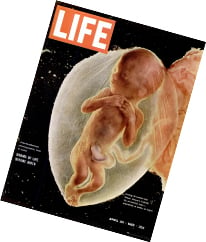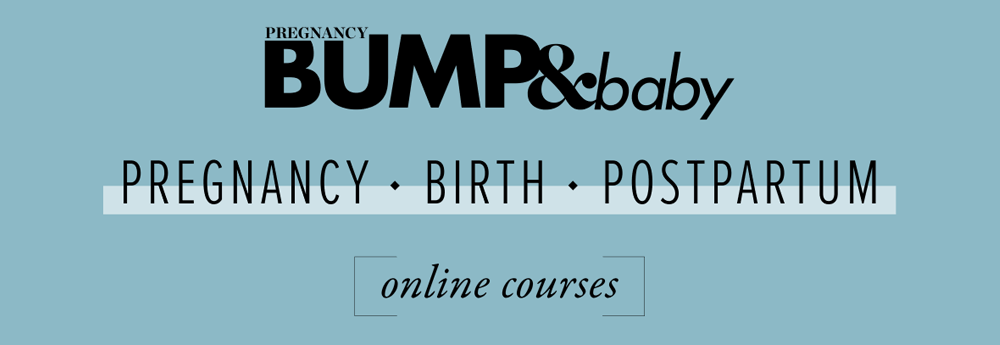Mum
The test is still showing “negative” or “undecided”, but you are definitely pregnant. There is more blood flowing to your breasts, so one of the earliest signs of pregnancy that you may be able to detect towards the end of week three is a change in your nipples. You may also detect an increased amount of vaginal discharge, possibly with a bit of spotting – this is usually normal and nothing to worry about, because the drop of blood is the result of the baby attaching itself to the uterus wall.
Dad
If you pay attention to your partner’s body, you may be the first one to detect the change in her breasts: they may feel more sensitive or look more pronounced. Her pink bits may darken in colour. If you notice these clues, well done – it means you’ve beaten science to it, because the pregnancy test is unable to pick up on those subtle changes.
Baby
You beautiful blastocyst, you! The cells you are made of contain a full set of DNA from Mum and Dad. Although you don’t have any eyes yet, your eye colour is already determined by the DNA you are carrying. You don’t have any hair, but whether it’s going to be curly or straight, silky or unruly, fair or dark – it’s already encoded and predetermined. Incidentally, although you are a perfect mixture of both your parents (23 chromosomes from mum and dad to make up a total of 46), it’s Dad’s genes alone that decide whether you’ll be a boy or a girl. How cool is that?
Things to keep in mind
- Get acquainted with your anatomy and the role each part will play in your pregnancy.
- Until the placenta is formed at about 10 weeks, a yellow body of cells called corpus luteum is formed to nourish your future baby.
- Hormones are starting to change and this can cause a few body changes, like morning sickness.
- Increased hormones will heighten your sense of smell.
- Increase your vitamin C intake to help with iron absorption.
- Hold off hair colouring this trimester or opt for a natural alternative if you are worried about toxins. For more things to avoid during pregnancy, check out this list.
- Time to rest up and eat healthily – here is an awesome guide for feeding that soon-to-be growing bump.

Photos in the bumpandbaby.co.nz/week-by-week/ are by Lenart Nilsson. Lenart's series was bought to fame when his photo, considered the greatest photo of the 20th century, appeared on the cover of Life magazine in 1965. “Everyone interprets images differently, depending on their social, cultural and religious background. In the digital era, I believe it is more important than ever to go back and take a look inside ourselves. What better way of doing that than with these photos?” ~ Jane Stene, art gallery director and curator of Lenart's definitive black and white series, told the The Guardian in 2019. It is Lenart Nilsson's wish that his images are never used for political debate about pro-life.






